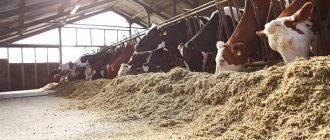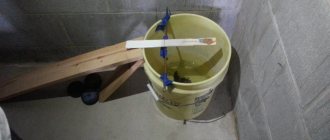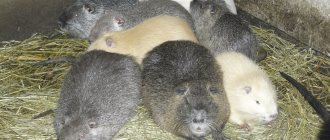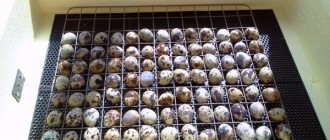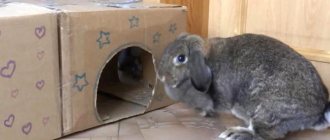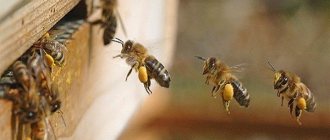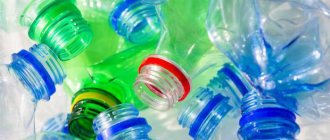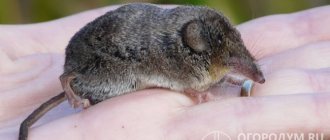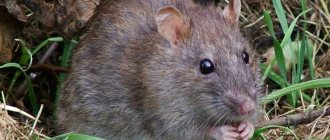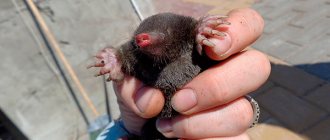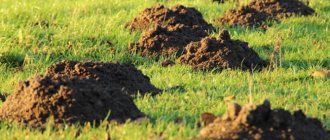- Wild animals
- >>
- Mammals
Nutria , the swamp beaver, is a rodent that leads a semi-aquatic lifestyle. This mammal has interesting habits and is a valuable fishery object. Farmers are actively breeding these animals, since their meat and fur are highly valued on the market. What are nutria, what are their habits and how do they reproduce?
Origin of the species and description
Photo: Nutria
Nutria is a mammal, it belongs to the order of rodents and represents the nutria family. It is called differently: otter, koipu, swamp beaver. All names are used with equal frequency. Although there are a number of experts who claim that nutria cannot be called swamp beavers. They claim that these animals are not related to real river beavers, rats. They resemble them only remotely - in similar habits and lifestyle. Therefore, such a comparison is incorrect.
Video: Nutria
Koipu are large rodents. Their body length can reach sixty centimeters, and their weight can be twelve kilograms. Male nutrias are always much larger than females. Externally, the animals look like a huge rat. Their body is covered with thick, shiny, long stubble.
Interesting fact: Despite their thick, dense fur, nutria do not emit an unpleasant aroma. They are very clean, unlike other members of the rodent family.
The beautiful, thick fur of nutria is the most important fishery object. For this reason, these animals began to be actively bred on animal farms located around the world. Today there are about seventeen breeds of this mammal. Ten breeds are mutational, seven are combined.
They are all divided into two groups:
- Standard;
- Colored.
The standard breeds include animal breeds with a classic brown color. Colored nutria appeared as a result of breeding. The color of their coat is varied. There are Azerbaijani and Italian nutrias that are white, pearlescent, and black. The fur of colored breeds is much more highly valued in the modern market.
Interesting facts about the rodent:
- Nutria is an object of fishing and breeding. The animals are kept in cages consisting of a special house with a walk and a swimming pool. Semi-free housing in enclosures and free-range housing are also used. On farms, nutria are bred in both the standard brown color and colored ones, white, black, pink, beige, and golden. The skin is slaughtered at the age of 8-9 months. The fur with the long axis has the greatest value. Nutria is also bred for meat. It tastes good and is recognized as a dietary product. In addition, nutria are tamed and kept as pets.
- The first nutria breeding farms were founded at the end of the 19th and beginning of the 20th centuries in Argentina. A little later, these rodents were introduced to the USA, Europe and Asia. Also, acclimatization of nutria was successfully carried out in the Transcaucasus, Georgia, and Tajikistan.
- In some countries, wild nutria are recognized as pests, as they eat aquatic vegetation, damage irrigation systems, dams, and undermine river banks.
Appearance and features
Photo: Nutria animal
From a distance, nutria look very much like huge rats. Their fur is shiny and has a long tail at the back. Excluding the tail, the average body length is about fifty centimeters, the average weight is six kilograms. However, these parameters are not the limit. In nature, individuals have been encountered more than once whose weight reached twelve kilograms and a length of more than sixty centimeters.
Interesting fact: Nutria are large rodents and have an excellent appetite. An animal can gain its adult weight by nine months after birth.
Koipu have a very strong build and have heavy, strong bones. The animal has a massive head. It has tiny eyes and ears. They look disproportionate. The shape of the muzzle is blunt, the teeth, especially the incisors, are painted bright orange.
Nutria leads a semi-aquatic lifestyle, so its body and organs have a number of anatomical features:
- The nasal openings of the animal have obturator muscles. When diving, they close tightly, preventing water from entering;
- The lips are separated, behind the incisors they can close tightly together. This prevents the passage of water;
- The toes of the hind limbs have special membranes. They help in the process of moving under water;
- The tail is rounded, not covered with thick hair, and quite powerful. It helps the animal control the direction of movement while swimming;
- The fur is waterproof. It consists of two parts: wool, undercoat. The coat is long, thick, and the undercoat is very dense. The fur repels water and does not get wet even after a long stay in a river or lake.
Owner reviews
Everyone who keeps swamp beavers notes their extreme unpretentiousness, cleanliness and omnivorousness.
They eat almost everything that grows in the surrounding area, but they especially love zucchini, apples, cabbage, carrots, sorrel and even watermelon rinds. The only thing that should not be given to nutria is sweet beets: for some reason rodents are poisoned by it and even die.
The animals, according to observers, eat porridge with mixed feed in an extremely hilarious way: they break off pieces with their paws, covering their eyes and groaning with pleasure when they put the porridge into their mouths.
Important! Animals get sick very rarely, but this does not relieve the owner of the responsibility to vaccinate them on time and keep the enclosure clean.
Often, nutria (with its tasty and rather expensive meat, as well as valuable fur) turns from a hobby into the main and significant source of income not only for one person, but also for the whole family.
Return to content
Where do nutria live?
Photo: Live nutria
Initially, this rodent lived only in South America. This is his homeland. It was found in the territory from Brazil to the Strait of Magellan. Today, this animal is distributed across many other continents. He has adapted well to Europe, North America, Transcaucasia, Tajikistan, and Kyrgyzstan. Nutria appeared in these areas as a result of a resettlement program.
Programs for the resettlement of nutria were carried out at the beginning of the twentieth century. In most cases, nutria adapted perfectly, began to actively reproduce and settle in new lands. However, there were also setbacks in the resettlement process. The rodent has not taken root in Africa, in some parts of the former Soviet Union. In some regions, nutria initially took root, but died with the onset of winter.
For example, the population was completely destroyed by severe frosts in Scandinavia and in some northern states of the USA.
To live, nutria choose places close to ponds, lakes, and swamps. The water in the reservoir should be stagnant or slightly flowing, the shores of lakes and swamps should be overgrown. The animal does not settle in dense forests and mountains. It does not occur above a thousand meters above sea level. Coipus also avoid areas with cold winters and too low temperatures.
The fashion industry is against real fur
When calculating the profitability of a farm today, one should not underestimate such new fashion trends as the refusal to use natural fur.
Fashion houses with big names are abandoning it, world-famous stars no longer wear it, and some countries completely ban its production and sale. A living animal is better than a dead one. It's worth thinking about, isn't it?
What does nutria eat?
Photo: Male nutria
For living, koipu prefer to choose swampy river banks, shallow lakes, and reservoirs with standing water. They make burrows on the shore where there is a lot of vegetation. Based on their place of residence, it is not difficult to guess what nutria eat. Most of her diet consists of plant foods. These animals are unpretentious eaters.
They love to feast on:
- Leaves, stems of cattail;
- Young shoots of reeds;
- Roots of various aquatic and terrestrial plants;
- Water lilies and reeds;
- Water chestnut.
If a rodent begins to feel hungry at its place of residence, it may eat several mollusks, leeches or insect larvae. However, this happens occasionally. With a lack of nutrition, nutria prefer to simply find a new place to live.
Interesting fact: All systems of nutria, its anatomical features are perfectly adapted for life in water. The special structure of the organs allows the animal to eat food even at the bottom of reservoirs without breathing.
The diet for keeping nutria at home is slightly different. For better growth and beautiful fur, breeders feed animals with special balanced feed with the addition of grains, grass, and vegetables. Sometimes farm owners add leftover food from their own table to their daily diet.
The feed is mixed and steamed. This type of nutrition is considered the most effective. When keeping a large number of animals, dry feed can be used. But at the same time, one important rule must be observed - nutria should always have fresh water available. This is vital.
Area required for animals
The dimensions of the cage should be selected depending on the number of animals that are planned to be kept. It is worth considering that the area for one animal should be 70x70 cm.
Features of character and lifestyle
Photo: Nutria female
The entire life of nutria passes near reservoirs, rivers, and swamps. The animal avoids mountains and cold climates. To build its burrows, it chooses places with maximum vegetation, because plant food makes up ninety percent of the daily diet. The lifestyle of nutria can be called semi-aquatic. The animal spends a lot of time in the water. He can eat and swim there.
Coipus are most active in their natural habitat at night. At night they actively forage for food. They eat stems, rhizomes, leaves, reeds. If there is little vegetation, they can catch and eat a leech or a mollusk. The lifestyle of these animals is semi-nomadic. Nutria rarely live in one place. They move all the time when there is a lack of plant food.
Fun fact: Koipu are excellent swimmers. Without air, these mammals can travel a little more than a hundred meters underwater. They hold their breath for seven to ten minutes without harming their own body.
Nutria build burrows on steep banks and slopes. Shelters usually consist of several complex movement systems. Several animals live in burrows at once - from two to ten. Such groups consist of several females, a male and their offspring. Young males prefer to live separately, alone.
Like any other animal with fur, nutrias shed. However, among the Koipu it is not so limited in time. Molting occurs to one degree or another throughout the year. The least wool falls out in the summer and autumn periods of the year. Only in winter does the loss completely stop. In winter, these animals have the best quality fur.
Conditions for animals
First of all, the nutria needs to organize its cell. Wooden ones are not suitable for her, as she can easily chew through them. You will have to organize ones that have a metal coating or are covered with a metal mesh.
You also need an open or closed enclosure. If you plan to keep nutria outdoors, then you need to create a house for them so that the animal can take refuge in it.
Note!
Domestic hedgehog - a review of the best hedgehog breeds to keep, all the features of the pet from feeding to living conditions! + photos and videos
Domestic goat - an overview of the features of keeping goats, how to care for them and what to feed them, as well as diseases, treatment and prevention of diseases in the review!
Sheep - learn everything about keeping sheep, features of living conditions, diet and the main characteristics of sheep as a pet!
This is necessary even if the winters are quite warm. In the wintering room they need a temperature of +15 degrees.
Also keep in mind that good ventilation and access to fresh air all the time are important for the animal. But at the same time, drafts can cause them to become ill and even die.
The cage in which the nutria will overwinter or build its nest should stand at a height of 80 cm from ground level.
Social structure and reproduction
Photo: Baby nutria
Koipu breed well both in natural conditions and in captivity. It is high fertility that allows the animal population to be maintained at a sufficient level. In one year, an adult female can reproduce several times. During one pregnancy, the female bears up to seven cubs.
Males of this family are ready for the breeding process all year round. They are constantly active, unlike their ladies. In females, activity occurs only periodically - every twenty-five to thirty days. Most often, nutria gives birth to offspring in the warm season - spring and summer. The pregnancy of an animal lasts relatively short - about one hundred and thirty days. The fertility of females decreases by the age of three.
Interesting fact: Coipu babies have a high survival rate. Little nutria are able to adapt almost instantly to the conditions of the world around them. Animals adopt the habits of their parents literally a few days after birth. They also begin to swim and try some plant foods.
Baby Koipu grow very quickly. The peak of growth occurs in the first six months of life. By this time, they leave the family nest and begin to lead an independent lifestyle. In its natural environment, this animal lives for about five years.
Breeding
It is best to mate an animal starting from 8 months. One male can serve up to 15 females. It is possible to determine whether a female is pregnant only after a month and a half. Holding the nutria by the tail with one hand, you can feel the small balls in its stomach.
Fertilized females should be moved to another cage, where there is a swimming pool and a walking area. Breeding nutria should be carried out following all the rules.
Gestation continues for 4-5 months. Then fish oil should be added to the nutria’s food. Before the birth process, nutria does not eat anything. The birth itself lasts about half an hour, in rare cases it drags on for longer.
Born animals begin their movements immediately after birth. The weight of a newborn is approximately 200 g. Already on the third day after birth, the calves eat adult food and are able to swim in the pool.
In a situation where the female does not feed her cubs and behaves restlessly, it is better to move her to the male for a certain period of time. The nutria and its cubs are placed in a warm, comfortable enclosure. Rodents continue to grow actively for 2 years.
Natural enemies of nutria
Photo: Nutria animal
Koipa is not an easy target. Animals can hide from their enemies underwater, in complex systems of burrows. They build shelters with several exits and compartments. In such a hole it is quite easy to hide from danger. Nutria can stay under water for about ten minutes, quickly covering the distance with the help of powerful hind legs with membranes between the toes. This is quite enough to hide from the enemy.
If by swimming or near a hole a nutria has a chance to avoid an enemy attack, then on land, far from shelter, this animal is very vulnerable. His eyesight and charm fail him. With the help of hearing, a mammal can hear the slightest rustle, but this will not save it. Nutria run fast and do it in leaps. However, the beast's endurance is extremely low. After some time, a predator may overtake him.
The main natural enemies of this animal can be called predators. They are often hunted and attacked by wild wolves, cats, dogs, and foxes. Birds of prey, such as marsh harriers, also feed on nutria. Leeches and various parasites living inside cause great harm to the health of the mammal. Humans can also be considered natural enemies. Koipu are killed in large numbers by poachers and at the hands of ordinary people. In some countries, these animals are considered pests and are therefore deliberately destroyed.
Dangers
Nutria are characterized by good health. All that can harm them is improper, disordered nutrition.
The harsh climate is also not to the liking of the animals. They are afraid of drafts and severe frosts. A warm fur coat reliably protects their body from any cold weather. But the tails and paws are covered only with skin and are easily susceptible to frostbite. The wounds heal poorly and the animals suffer greatly.
As in any living community, it is possible that aggressive individuals will appear that will attack and injure relatives and humans. Their behavior is not corrected. Such animals should be identified, isolated and disposed of first.
MR protocol
T2 FSE images only, no contrast enhancement.
Only T2 FSE sequences are required. The use of gadolinium drugs does not improve diagnostic accuracy and, therefore, they are not included in the standard protocol for this pathology. Images are obtained in the sagittal, coronal and axial planes. It is necessary to start with the sagittal series; axial images are built along it, perpendicular to the walls of the rectum at the level of the tumor (blue lines). Coronal images are aligned perpendicular to the axial series (yellow line) through the distal portions of the tumor and parallel to the anal canal. This approach avoids partial volume artifact and allows for accurate assessment of the depth of tumor invasion, as well as assessment of tumor ingrowth into the anal canal. In addition, the surgeon’s direction to study the tumor level helps to correctly plan the MR sequence. The upper limit of the field of view (FOV) is L5, the caudal limit is below the level of the anal canal. A superficial coil is recommended; an endorectal coil is not necessary. There is no consensus on whether to use 1.5T or 3.0T systems. Diffusion-weighted images can be used to re-estimate the stage of a process. A high signal level on B1000 images indicates an incomplete response.
Angles
Axial images should be at the correct angle, perpendicular to the tumor axis, to avoid volume averaging. In the example on the left, the first planning of the axial images was performed at an incorrect angle, which gave the false impression of involvement of the mesorectal fascia (MRF, highlighted in red circle), when correctly changing the angle perpendicular to the axis of the tumor, it is clear that the mesorectal fascia (MRF) is not involved (yellow circle).
Do not use fat suppression programs or rectal contrast.
Fat signal suppression does not improve visualization of tumor boundaries. Patients do not require bowel preparation. The use of rectal contrast is not recommended because distension of the bowel wall may lead to false-positive results in the absence of invasion of the mesorectal fascia. In addition, it makes the assessment of distal mesorectal lymph nodes difficult. Description of the study
N-stage
The presence of N-stage is an important risk factor for the development of locoregional relapse. Unfortunately, MRI, like most other imaging modalities, has low sensitivity and specificity for detecting lymph node metastases. Lymph nodes with short axis dimensions > 5 mm, changes in shape, radiant contours and unclear boundaries or a heterogeneous structure are considered affected. However, not all affected lymph nodes meet these criteria. The TNM5 classification is more commonly used to determine the N stage. The N stages in TNM7 are similar to TNM5, but the N1 and N2 stages are more differentiated.
Even in T1 and T2 stages of the tumor process there is a significant risk of metastatic damage to the lymph nodes (see table).
The low sensitivity of use for assessing size alone may be explained by the fact that in colorectal cancer the presence of malignant changes even in small lymph nodes is widespread, up to 9% in nodes measuring 1-2 mm nodes and up to 17% in nodes measuring 2-5 mm (11). As shown in the table on the left, most changes are detected in lymph nodes measuring 1-5 mm. In order not to underestimate the stage, all visualized lymph nodes can be considered as malignant.
The image on the left shows an inferior ampullary rectal cancer with multiple lymph nodes in the perirectal tissue posterior to the ampulla. This has a huge impact on the patient's prognosis based on MRF+ and N+ status, so the patient will receive more aggressive treatment with neoadjuvant chemoradiotherapy.
It is important to pay attention to the lymph nodes of the posterior mesorectal tissue (arrow). These mesorectal lymph nodes are important because they can be the cause of local recurrences. If detected by MRI, radiation therapy and surgical planning will be tailored. On the left is a patient after TME with relapse in mesorectal tissue nodules (arrow)
These mesorectal lymph nodes were not resected during standard TME surgery. Determination of malignant mesorectal lymph nodes at a minimum entails a more advanced surgical tactic, since it is necessary to remove all tumor nodes or increase the dose of radiation therapy in the risk area
If detected by MRI, radiation therapy and surgical planning will be tailored. On the left is a patient after TME with relapse in mesorectal tissue nodules (arrow). These mesorectal lymph nodes were not resected during standard TME surgery. The identification of malignant mesorectal lymph nodes at a minimum entails a more advanced surgical approach, since it is necessary to remove all tumor nodes or increase the dose of radiation therapy in the risk area.
Axial T2-weighted images on the left show two patients with rectal cancer. These examples illustrate the complexity of determining N-status. A small extramesorectal lymph node is identified on the far left. In the image on the right, numerous large mesorectal lymph nodes are visualized, and a lymph node with unclear boundaries is identified in the right parts of the extramesorectal tissue (red arrow). Although the lymph nodes of these patients had different characteristics in terms of size, borders, and heterogeneous appearance, they were all found to be malignant. Rectal cancer is characterized by metastatic lesions of small lymph nodes.
Castration for better weight gain and prevention of self-castration during collective housing
Preparation
Regardless of which method you choose, the first thing you need to do is cut off the hair in the scrotum area and lubricate the operation site with a three percent iodine solution.
Closed method
Since the inguinal rings of nutria are quite wide, the testes easily move from the scrotum to the abdomen. To force them out into one of the scrotums, you need to press from the arch of the ribs onto the wall of the abdomen with your fingers. Slowly, applying pressure, move the hand towards the pubic bone; as a result, the testes will be pushed back into the scrotum. Next, they need to be properly fixed.
The scrotum is made up of layers that need to be cut down to the vaginal lining. Next, it needs to be moved closer to the external inguinal ring and to the spermatic cord, which is covered with the vaginal layer. Now you need to apply a ligature. You need to step back about one centimeter from it and cross it with the spermatic cord.
Next you need to take a complex powder and sprinkle it on the scrotal cavity.
Open-closed method
The open-closed scheme, often practiced on nutria farms, is named after its inventor, Vlasenko.
It differs from the method described above by the need to dissect all layers of the scrotum. Including the vaginal layer. The length of the cut is about one centimeter. First cut:
- skin;
- then the muscle-elastic layer;
- fascia.
You need to press on the wall of the scrotum, slightly dissecting the vaginal layer from the layer of the fascia. Then you need to make an incision of the same length in the vaginal membrane. The testis should come out into the incision. Next, you need to pull it until the vaginal layer begins to appear from the wound, which is connected to the testis and cord by the transitional ligament and mesentery. As you begin to pull up the testis, the tunica vaginalis will cover the spermatic cord and pull up with it. A number six silk ligature should be placed on the spermatic cord, which is covered with the vaginal membrane, two to three centimeters above the epididymis. Stepping back half a centimeter from the ligature, the testis is cut off. The other one is cut off in the same way. After completion, the wounds must be treated with an antiseptic.
Meat value
Nutria meat tastes much like pork, but differs favorably from it in its “lightness” and beneficial properties.
With a calorie content of 149 kilocalories per 100 g of product, the nutritional value is as follows:
| squirrels | 23.92 g |
| fats | 4.72 g |
| carbohydrates | 1.01 g |
| water | 70.82 g |
| ash | 0.98 g |
It contains (per 100 g):
| thiamine | 0.058 mg | ||||||
| tocopherol | 0.95 mg | ||||||
| folacin | 12.51 mg | ||||||
| biotin | 0.009 mcg | ||||||
| pantothenic acid | 0.44 mg | ||||||
| retinol | 0.06 mg | ||||||
| riboflavin | 0.21 mg | ||||||
| ascorbic acid | 1.97 mg | ||||||
| choline | 125.1 mg | ||||||
| cobalamin | 7.81 mcg | ||||||
| niacin | 1.85 mg | ||||||
| iron | 6.8 mg | ||||||
| potassium | 347.7 mg | ||||||
| calcium | 14.89 mg8 | ||||||
| cobalt | 14.88 mcg | ||||||
| magnesium | 24.79 mg | ||||||
| manganese | 26 mcg | ||||||
| copper | 151 mcg | ||||||
| sodium | 50.8 mg | ||||||
| zinc | 2.5 mg | ||||||
| iodine | 5.3 mcg | phosphorus | 236.8 mg | fluorine | 103.4 mcg | selenium | 26.5 mcg |
People who regularly eat nutria meat have noticed positive changes in their bodies.
- This easily digestible delicacy is believed to have the following health benefits:
- strengthens the immune system (recommended by nutritionists after grueling physical activity and long-term illnesses);
- nourishes the body, providing the necessary proteins, vitamins and microelements for obesity (helps to lose extra pounds);
- increases vitality (helps cope with drowsiness, insomnia);
- improves the condition of hair, nails and skin;
- stimulates the production of thyroid hormones (recommended for thyroid dysfunction);
- activates metabolism;
- improves the blood formula (for anemia).
Important! Nutrium meat is strictly contraindicated for people with individual intolerance. In all other cases, it should be consumed only after careful heat treatment, since this is a favorable environment for the proliferation of Trichinella.
Diseases, prevention
The nutria family is distinguished by a well-developed immune system and good health. In farm and wild conditions they rarely get sick. Having a low susceptibility to infectious and parasitic infestations, they compare favorably with other fur-bearing animals.
We recommend that you familiarize yourself in more detail with the main diseases of nutria and how to treat them.
However, with improper maintenance, as well as epidemic outbreaks, cases of infection with diseases such as:
- Salmonellosis . Infectious agents enter the animal's body through dirty feeders and drinking bowls. They are also carried by rats, flies, sparrows and people. Young animals are especially vulnerable to the disease. To stop the infection, it is necessary to eliminate sick individuals (they are killed and burned), disinfect the cells, including equipment, and apply a course of Levomycitin, Biotin or Furazolidone to the remaining members of the family. For prevention purposes, annual comprehensive vaccination is recommended.
- Pasteurellosis . Conductors of pathogenic microflora are food and water, as well as other rodents, birds, and livestock. The disease has a high mortality rate, so it is important to start therapy in the initial stages. Usually in such cases, veterinarians prescribe Bicillin-3, Streptomycin, and Penicillin. To prevent the disease, it is important to promptly vaccinate animals with a special serum.
- Tuberculosis . The course of the disease is often asymptomatic. The cause of its development may be sick relatives or infected cow's milk. Alarming symptoms are shortness of breath, cough, apathy, and immobility. It is impossible to save the patients under their care; death usually occurs several months after infection. Therefore, it is important to provide home nutria with a balanced diet and proper care.
These are the most common and dangerous diseases that threaten captive swamp beavers. Violation of sanitary standards during their maintenance can also cause the development of helminthiasis, food poisoning, and ringworm. If you notice the first symptoms, immediately seek help from a veterinarian.
Video: nutria diseases
Breed classification
Nutria breeders who breed nutria have divided them into three groups:
- Standard breeds. These nutria are almost identical to animals living in nature - in color and size.
- Colored breeds. They are divided into two subgroups. The essence of division is the ability of animals mated with “standards” to bear offspring. There are two types of rocks:
- Dominant. These include the golden, black and Azerbaijani breeds. By crossing a dominant specimen with a standard one, offspring with a unique color are obtained.
Recessive. This includes pearlescent, Italian, smoke, white and beige nutria breeds. If you cross them with the “standard”, the offspring will have a predominantly brown tint of fur.
- Large breeds. If you feed nutria with especially nutritious feed, you can get larger carcasses than usual. But there are breeds that are gigantic in themselves, among them:
- black nutria;
Azerbaijani whites.
Colored nutria weigh 5-7 kg. Length – 45-60 cm.
If an ordinary individual weighs 5-7 kg, then representatives of large breeds grow up to 15 kg. Males are especially large. The value of these breeds lies in their high meat yield and large area of skin.
The healing properties of fat
Nutrium fat is recommended as an easily digestible, non-refractory product that is not capable of causing harm to the human body. It is even recommended to be consumed by people suffering from hypertension.
- For medicinal purposes it is used for:
- colds (to get rid of a runny nose, it is enough to lubricate the nostrils for 2 days);
- bronchitis and pneumonia (due to the property of improving blood circulation and thinning mucus, it is recommended to lubricate the chest and the area between the shoulder blades with massage movements, then wrap yourself in a warm blanket);
- sore throat (warm compresses are effective);
- deep, poorly healing wounds, heel cracks (used externally).
